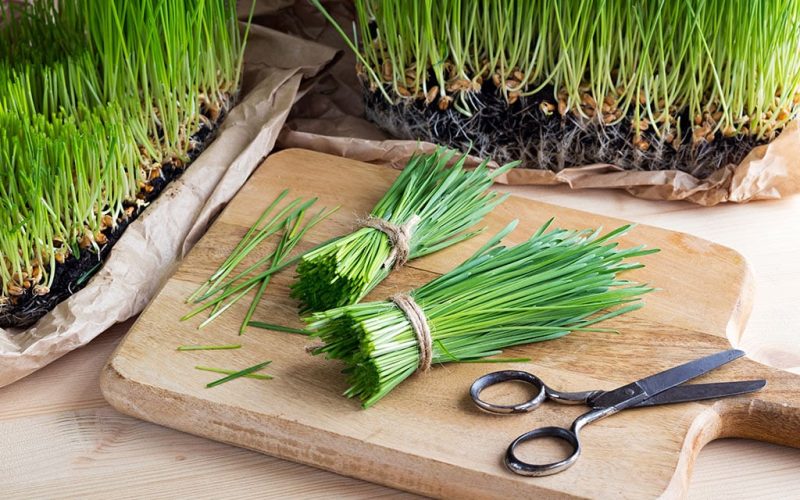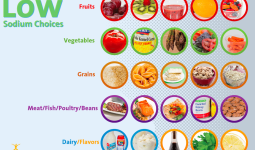If you are conversant with the latest trend in the natural health world, you would know that wheatgrass juice has come into the spotlight now because of its immense health benefits.
Well, this post will shed more light on the health benefits of wheatgrass, how to make the juice, and how to take it. You can also get wheatgrass powder or supplement from a reputable health store.
You can also make your wheatgrass juice, supplement or powder at home. Due to the immense health benefits of wheatgrass, it is known as “green blood”.
Below are some of the evidence-based health benefits of wheatgrass.
- Alleviate inflammation
Inflammation is the root cause of most chronic diseases like autoimmune disease, heart disease, and cancers. It is the normal response of the immune system. This is done to protect the body from infections and injury.
Some studies have shown us that the components of wheatgrass can reduce inflammation in the body. In a small study, it was discovered that drinking just half a cup of wheatgrass juice which is about 100 ml for a month reduced the severity of ulcerative colitis.
It also reduced rectal bleeding in people with ulcerative colitis. This disease is characterized by inflammation in the large intestine. The rich content of chlorophyll in wheatgrass also helps it fight inflammation.
This plant pigment has powerful anti-inflammatory properties. It inhibits the activities of proteins that cause inflammation.
- It is nutritious
Wheatgrass is highly nutritious. It contains a lot of important nutrients like selenium, Vitamins A, C, E, amino acids, iron, and chlorophyll.
Wheatgrass also contains antioxidants like phenolic acids and flavonoids. Electrolytes including calcium and magnesium are also present in wheatgrass.
- It treats skin problems
Wheatgrass can treat many skin problems including sunburns, psoriasis, and eczema. It treats and clears acne scars. It also hastens the healing of wounds by regenerating skin cells.
You can rub wheatgrass juice on the affected skin part or the acne scars. Wash it off with lukewarm water after 10 minutes and then you dry the area.
- Serves as a natural deodorant
Wheatgrass is a natural deodorant. It de-odorizes your body and also fights halitosis. This is a sure remedy against body odor.
- They are dense in antioxidants and nutrients
Wheatgrass is a storehouse of many nutrients that the body depends on for survival. These include vitamins A, C, E, magnesium, iron, calcium, and even essential amino acids.
There are 17 amino acids in wheatgrass and your body can’t make 8. These are called essential amino acids and you must get them from the foods you eat.
Wheatgrass, like all green plants, contains a powerful compound called chlorophyll. This pigment has many health benefits. They are several powerful antioxidants in chlorophyll.
The antioxidants in wheatgrass are vitamin C, E, and glutathione. These antioxidants fight free radicals and this, in turn, prevents oxidative stress and cell damage.
Antioxidants even protect your body from cancer and other chronic diseases like arthritis, heart disease, and neurodegenerative diseases. It even helps balance the levels of cholesterol.
- It aids weight loss
Wheatgrass juice is commonly added to the diet of people who want to lose weight. It is rich in thylakoids. These phytochemicals are tiny compartments that contain chlorophyll in plants.
They help to absorb sunlight for photosynthesis. These thylakoids promote satiety and this helps to promote weight loss. They increase the hormones that decrease hunger and they also slow down the emptying of the stomach.
Thylakoids are also found in other green leaves like lettuce, spinach, and kale. The concentrations of thylakoids used in these studies are more than those found in wheatgrass.
- Treats digestive and bowel problems
Wheatgrass treats your digestive system. It cleanses your gastrointestinal tract, this, in turn, would prevent and treat bowel problems.
It stimulates regular bowel movement. It relieves constipation and stops rectal bleeding.
- It boosts hair growth and hair health
Wheatgrass reverses gray hair. Its rich content of antioxidants and catalase are responsible for this. They also slow down the process of aging.
A glass of wheat juice daily can give you this benefit. The juice of wheatgrass can also serve as an effective hair conditioner. It treats dandruff and dry hair.
- It boosts fertility
Wheatgrass promotes fertility and it also increases libido. It promotes stamina also. A compound called P4D1 is present in wheatgrass and it has a positive impact on sperm cells.
It also has a positive impact on your DNA and it boosts fertility.
- It moderates the levels of cholesterol
Cholesterol is produced by the liver and found throughout the body. It has many important functions like repairing damaged tissues and protecting body organs.
However, if your blood vessels are damaged, your liver would produce more cholesterol which would be used to patch your blood vessels. This can block the flow of blood to vital organs and lead to problems such as stroke and heart attack.
However, wheatgrass helps in lowering your cholesterol levels, especially bad cholesterol (LDL) and triglycerides. Studies revealed that the effects of wheatgrass on cholesterol are similar to that of atorvastatin.
This is a prescription drug used in treating hypercholesterolemia. Wheatgrass also increases the levels of good cholesterol HDL in the body.
- It alkalizes the body
Wheatgrass has an alkalizing effect on the body. In this state, no disease can thrive in your body, whereas, all diseases can thrive in an acidic body.
This would help in the absorption of nutrients, especially electrolytes. It also boosts the absorption of vitamins E and C. the rich content of chlorophyll in wheatgrass gives it the ability to alkalize the body.
- It detoxifies the body
Chlorophyll detoxifies the body and wheatgrass has a very rich content of chlorophyll. It also increases the content of oxygen in each cell of your body.
- Treats blood disorders
A study showed that wheatgrass lowered the need for blood transfusion in patients with thalassemia. It also increases the amount of oxygen in the blood.
This boosts blood circulation and detoxification.
- It protects your brain
Wheatgrass promotes brain health and guards against Alzheimer’s disease. People who suffer from this condition would benefit greatly from wheatgrass.
It supplies the brain and body with sufficient chlorophyll and oxygen. The brain depends heavily on oxygen. Also, the rich antioxidant content of wheatgrass makes it effective in treating Alzheimer’s.
It also reduces oxidative stress in the brain and body. it does this by promoting the actions of superoxide dismutase and catalase in rats.
- It kills cancer cells
The high content of antioxidants in wheatgrass makes the body inhabitable for cancer cells. They even kill cancer cells and leave the healthy cells of the body.
A study proved that the extract of wheatgrass reduced the spread of mouth cancers by 41%. Another study also showed that it induced apoptosis in several leukemia cells by 65% in just three days of treatment.
When taken along with modern cancer treatments like chemo, wheatgrass helps to reduce the adverse side effects. In a study, wheatgrass was found to reduce the risk of impaired bone marrow function.
This is a major complication of chemotherapy.
- Boosts immunity
Wheatgrass boosts your immune system and it even has a strong anticancer property. Cancer occurs in people who have compromised and weak immune systems.
It triggers the self-destruction of cancer cells. It boosts your immune system and helps in regulating the functions and activities of your immune system.
It fights free radicals and oxidative stress that leads to cell mutations. It also relieves the side effects of chemotherapy such as nutritional deficiencies, malabsorption, and fatigue.
- Relieves nausea
Wheatgrass cleanses the body. It drains toxins from the lymph nodes. It also breaks down mucus and expels them from the body. This relieves the symptoms of nausea.
- It relieves depression and stress
There is a high content of B vitamins in wheatgrass. This helps the brain in overcoming stress and depression. It is also rich in iron and a deficiency in iron has been linked to depression.
- It cleanses your liver
Wheatgrass helps in detoxifying the body. One of the ways it does this is to bind to toxins in the liver and escort them out of the body. Wheatgrass is rich in fiber, this nutrient binds to toxins and makes it impossible for your body to absorb them.
They forcefully expel toxins from your body and help to promote a healthy liver. They stimulate liver functions.
- Reverses sugar problems
Wheatgrass helps to regulate sugar in the bloodstream. Hyperglycemia can trigger uncomfortable symptoms in the body like fatigue, thirst, frequent urination, and even headaches.
Over time, if this is not corrected, this can lead to nerve damage, vision problems, skin infections, and other serious consequences. Wheatgrass helps to control the concentrations of sugar in your bloodstream.
- It energizes
Wheatgrass relieves fatigue and energizes you. It does this by boosting the circulation of oxygenated blood all through your body.
Wheatgrass also contains a lot of iron. This nutrient increases the number of red blood cells in your body. This, in turn, helps to carry more oxygen and thus energize you.
You won’t feel fatigued if you have a sufficient amount of red blood cells.
Who Can Use Wheatgrass?
Wheatgrass is generally safe for everyone. Even people with sensitivity to gluten or celiac disease can take wheatgrass. The grass does not contain gluten, only the seeds of the wheat kernel contain gluten.
However, you should consult a doctor or a naturopath if you are sensitive to gluten before consuming wheatgrass. You should be careful if you are growing your wheatgrass at home.
They are susceptible to mold. So you should discard it if it shows signs of spoilage or has a bitter taste. If you experience diarrhea, headaches, or nausea, you have to decrease your intake of wheatgrass.
If these negative symptoms persist, you have to talk to a naturopath or take out wheatgrass from your diet.
How best to take wheatgrass?
The best way to take wheatgrass and benefit from it is to take it closest to its natural state. Avoid over-processed wheatgrass products.
Before you take any wheatgrass pills, supplements, or powders, you have to check with a doctor or naturopath. You also have to read the label to make sure that other toxic ingredients are not added.
I would advise that a naturopath prescribes natural products for you. You shouldn’t buy it from any source. Their purity and standard might be questionable.
However, wheatgrass smoothie can improve your health greatly if you take it daily. Please listen to your body. Don’t overtake it and stop if you notice any reaction.
It mustn’t be wheatgrass. There are other green leafy vegetables you can use. They offer the same health benefits since they are also rich in chlorophyll, phytochemicals, and antioxidants.
But if taken moderately, wheatgrass smoothie won’t cause any problem for you or give you an adverse reaction. Taking wheatgrass smoothie is not enough, it has to be followed with healthy nutrition and a healthy lifestyle too.
This is when you would see an immense improvement in your overall health.
How to Make Wheatgrass Juice?
If you plant wheatgrass yourself, you can easily have access to them. But if you don’t, there is no need for panic. You can get organic wheatgrass from the market.
Make sure it is organic and has not been sprayed with harmful chemicals and pesticides. Wash a good quantity of wheatgrass and blend until very smooth.
Your wheatgrass juice is ready. I don’t advise you to sieve because you would be throwing away vital nutrients like fiber. That is why you should grind it smooth so that you can easily drink it.
If the taste is too strong for you, you can improve the taste by blending it with fruits such as pineapples. This would sweeten it naturally. Please avoid refined or artificial sweeteners, they are not good for your health.
References;
- Hypolipidemic effect of fresh Triticum aestivum (wheat) grass juice in hypercholesterolemic rats. NCBI
- Wheatgrass: Green Blood can Help to Fight Cancer NCBI
- Cytotoxic effects of commercial wheatgrass and fiber towards human acute promyelocytic leukemia cells (HL60). NCBI
- Wheatgrass juice may improve hematological toxicity related to chemotherapy in breast cancer patients: a pilot study. NCBI
- Antidiabetic and Antioxidant Properties of Triticum aestivum in Streptozotocin-Induced Diabetic Rats NCBI
- Hypoglycaemic role of wheatgrass and its effect on carbohydrate metabolic enzymes in type II diabetic rats. NCBI
- Wheatgrass juice in the treatment of active distal ulcerative colitis: a randomized double-blind placebo-controlled trial. NCBI
- Chlorophyll revisited: anti-inflammatory activities of chlorophyll a and inhibition of expression of TNF-α gene by the same. NCBI
- Chlorophyll-related compounds inhibit cell adhesion and inflammation in human aortic cells. NCBI
- The inflammation theory of disease: The growing realization that chronic inflammation is crucial in many diseases opens new avenues for treatment NCBI
- Supplementation by thylakoids to a high carbohydrate meal decreases feelings of hunger, elevates CCK levels and prevents postprandial hypoglycemia in overweight women. NCBI








